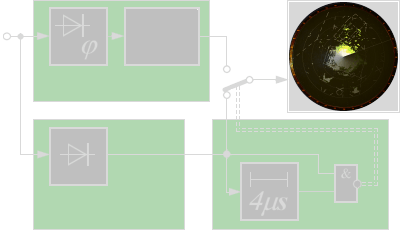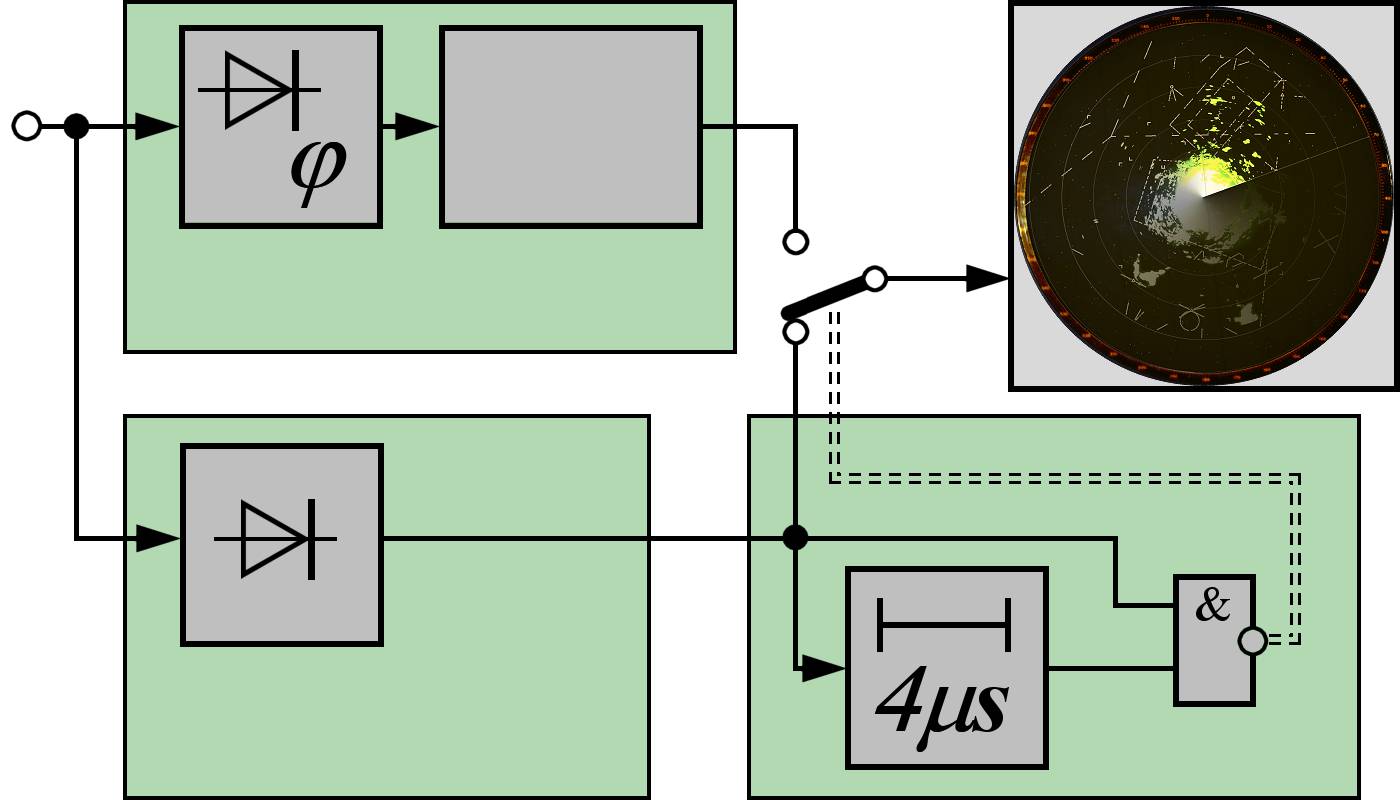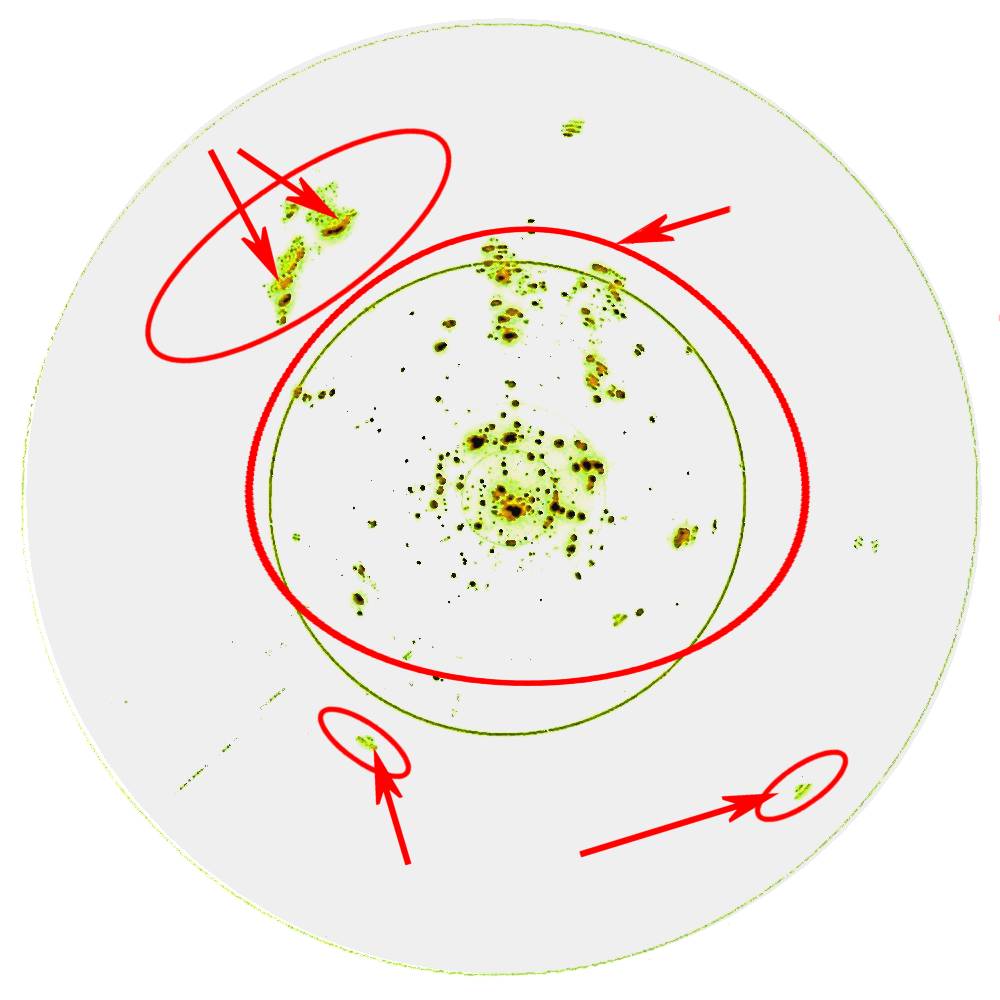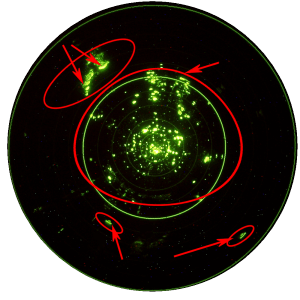Recognizing of too long echo pulses

system
video
video
Figure 1: Principle of operation of the Rain-Reject wiring

system
video
video
Figure 1: Principle of operation of the Rain-Reject wiring

system
video
video
Figure 1: Principle of operation of the Rain-Reject wiring
Recognizing of too long echo pulses
If the radar set uses a transmitting pulse length of e.g. 1 µs, then can be expected that the echoes of objects of geometrically bounded extension (i.e. aircrafts) then have a length of about 1 µs also. Even if several airplanes fly in formation, the sum of the lengths of these echoes of more than 10 µs then is improbably.
Well, therefore you can suspect that echoes with a multiple pulse length of the transmitted pulse are a kind of jamming. However, it is also unreasonable to switch these echoes off. The example of Pearl Harbor has this proved, as the operator of the radar didn't warn the Marines, interpreting the heavy Japanese attack formation as a screen fault.

Clutter
Figure 2: PPI-screen with different clutter. The Weather-clutter has got a highlighted leading edge owing to the rain-reject operating (delay line)!

Clutter
Figure 2: PPI-screen with different clutter. The Weather-clutter has got a highlighted leading edge owing to the rain-reject operating (delay line)!
When recognizing a too long echo pulse than the echo isn't switched off therefore but it is switched to the coherent channel with the pulse pair processing. In Russian radar units this operating mode is called „автоматический строб”, an automatic switching strobe, that means in German: „automatischer Bandimpuls”. In radar units of American origin this device is called „rain reject”. Right well: this kind of interference with too long echo pulses usually appears, if heavy rainclouds produce an area of diffused reflection.
However, this wiring needs a certain time, before it can recognize that the pulse is too long. Therefore the front edge of the pulse always remains visible when recognizing such a area of diffused reflection. Well, the wiring doesn't work only like a differentiating stage, it is also only a differentiating stage using a small serial capacitor in very simple radar sets.
This wiring for example is examined in whether the echo signal is longer than 4 µs.
Note: This function is called STC (Short Time Constant) in some British publications; and FTC (Fast Time Constant) in some American publications.
